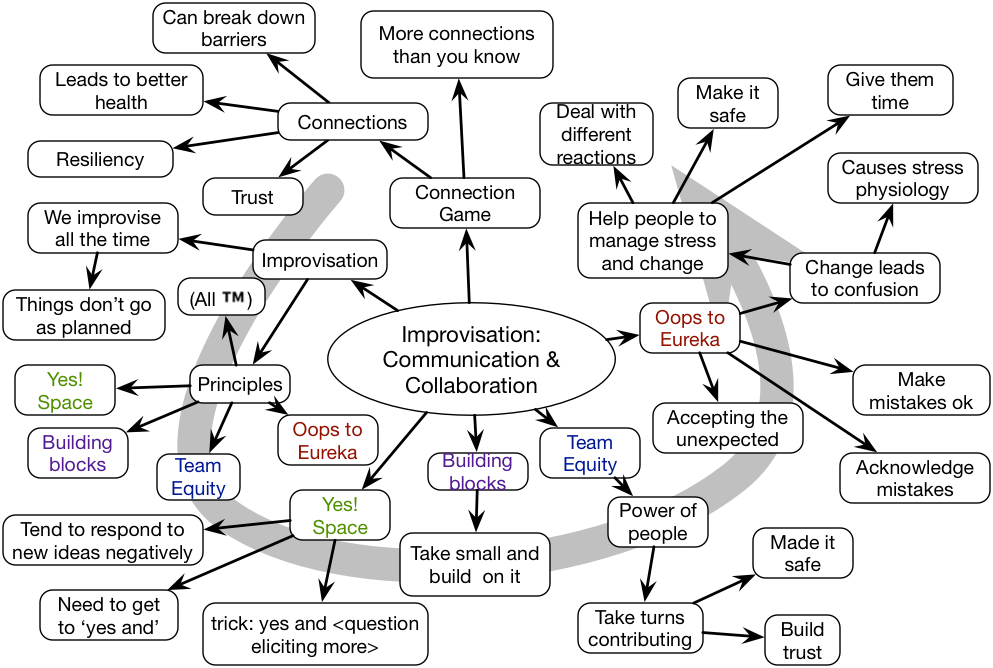It’s Working Out Loud (WOL) Week, and that’s always a valuable time for reflection. It so happens that the past few weeks I’ve been working with an organization, and they were ripe for WOL. The problem was what, specifically, should they do to make this work? They had barriers. My (off the cuff) recommendations were around creating some habits of work.
For context, they’re a very distributed organization, and have been for decades. They’ve a number of locations spread around over a space of hundreds of miles. As a consequence, they’re well-practiced at a variety of distance communication modalities. They have well-equipped video conferencing rooms, social media tool, and of course email. And yet, their communication is very formal. They’re busy of course, so while they recognize the benefits of sharing better, it’s hard for them to implement.
There would be rewards, of course. They have distributed teams supporting the same sorts of actions. Various job roles do similar work with a variety of stakeholders, and would benefit by sharing best practices, creating communities of practice around those job roles. However, for a variety of reasons, including ineffective use of the available tools, time pressures, and general lack of awareness and practice, the practices not in play.
As part of my ‘critical friend‘ role, I made some suggestions, including working out loud. They asked for specific steps they might take. So what’d I recommend? Several things:
- Narrating their work: they need to find a way to represent their progress on each project, and include a ‘rationale’ that captures the thinking behind their decisions.
- Creating communities: they should establish a group (with whatever tool) for each role, and do some community management around it to generate dialog and learnings.
- Walking the walk: if the leadership (not of the overall organization, just the leaders of this learning unit, at least to start ;) practices the working (and failing) out loud, it would be motivation to others. It runs better when everyone sees it’s safe to make mistakes as long as you share lessons learned).
This was off the cuff, and I might have suggested more, but this is a reconstituted list that I think captures some major necessary areas. It’s about practices that build the culture. These will need support, but they are the core ideas that can drive a move to a more open, sharing workplace. One that leads to continual improvement and innovation.

 So, one of the first requirements was to have the necessary tools to explore. In the old days that could include means to navigate (chronograph, compass), ways to represent learnings/discoveries (map, journal), and resources (food, shelter, transport). It was necessary to get to the edge of the map, move forward, document the outcomes, and successfully return. This hasn’t changed in concept.
So, one of the first requirements was to have the necessary tools to explore. In the old days that could include means to navigate (chronograph, compass), ways to represent learnings/discoveries (map, journal), and resources (food, shelter, transport). It was necessary to get to the edge of the map, move forward, document the outcomes, and successfully return. This hasn’t changed in concept.

